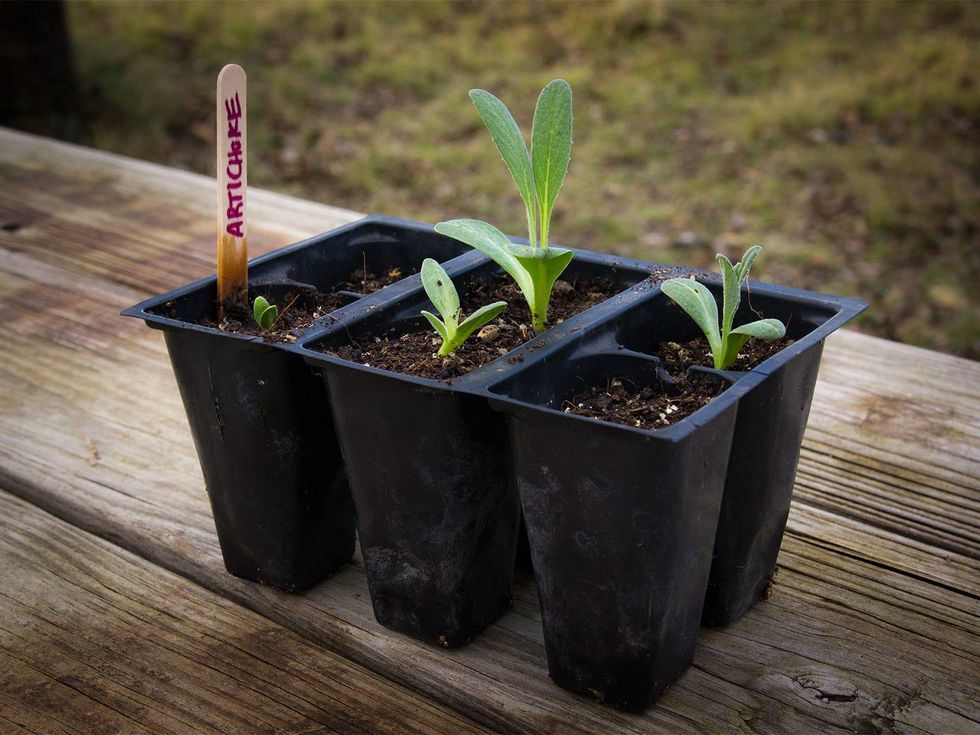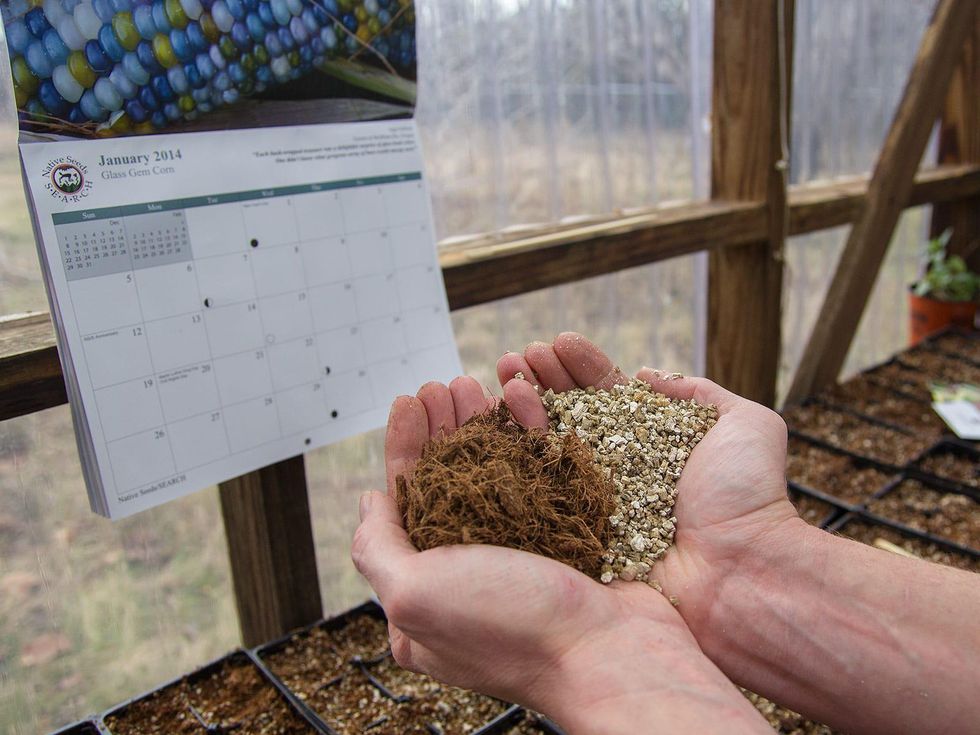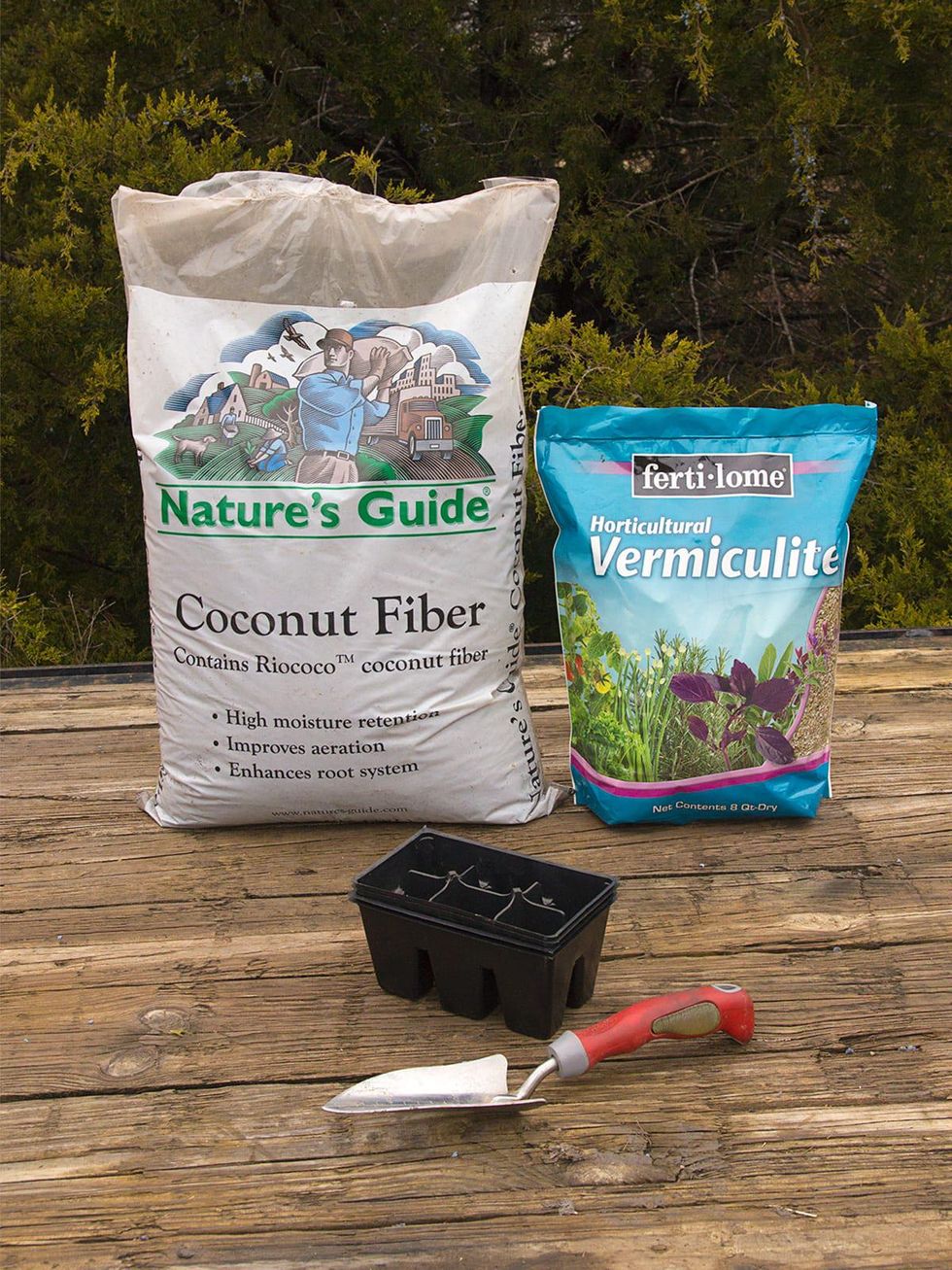The Farmer Diaries
Texas farmer jump-starts his spring garden with clever seed-planting method
Each spring, the garden centers of big-box retailers fill up with seedlings, ready to be transplanted to your garden. They may look good, but they're frequently ordinary: beefsteak tomatoes, California wonder bell peppers, hybrid flowers with garish colors and no trace of fragrance. They are expensive too — and not especially suited to our climate or our pests.
You can wait until then and transplant their seedlings. Or you can get a jump now and start your own seeds. Anyone with seeds, pots, seed starting mix and a sunny windowsill can do it.
The target date to transplant seedlings into the garden is mid- to late March. That means starting seeds in January, to give your seedlings a six-week head start on the frost-free season.
Get a jump now and start your own seeds. Anyone with seeds, pots, seed starting mix and a sunny windowsill can do it.
You want to choose crops that tolerate transplantation well and have a larger payoff for the time invested in starting them early. Tomatoes, peppers and broccoli are good examples. They seem unaffected by having their roots pried out of a container and pushed into the ground, and each plant produces baskets full of produce.
In contrast, melons, squash and cucumbers are not suitable for starting early, since they stop growing for a few days or weeks if their roots are disturbed. Directly-sown seeds of these cucurbits can easily outpace their transplanted counterparts; therefore, they are not worth the effort.
To figure out which crops are good for seed starting, check the seed packet or the listing of the crop on the seed company's online catalog. Botanical Interests, for example, gives all the details on when and how to plant a crop indoors or out, as well as which method is preferred for best results.
Once I decide which crops I want to start indoors, I fill six-pack transplant trays with seed-starting medium: a sterile, soilless blend of equal parts vermiculite and coconut coir; both are available at garden centers. By mixing my own medium, I spend about a third of what it costs to buy packaged seed-starting mixes. By purchasing large bulk bags of each, I save even more and have enough left over for the next year.
To mix these ingredients, I take a fistful of vermiculite from one bag and a fistful of coir from the other and toss them into a five-gallon bucket. I stir with a garden trowel and sprinkle in enough water to keep the blend moist but not soggy. Once my bucket is full, I dole out my mix into starter trays and place them in a spot that will get six to eight hours of sunlight a day.
After setting up my trays, I plant. I use a chopstick or pencil to make a small depressions in the seed mix near the middle of each plug in the tray. As a rule, seeds need to be planted at a depth of about three times their size. For tomatoes and kale, that's slightly below the surface of the starting medium.
Lettuce seeds should be dropped right onto the medium and left uncovered; they need light to germinate. There are several other light-needing plants, often identified as such in their catalog description.
Choose crops that tolerate transplantation well. Tomatoes, peppers and broccoli are good examples.
Even if the crop description fails to identify the light requirement, the packet will usually instruct growers to scatter the seed over the surface of the soil. It's good to follow directions, sometimes.
Not all seeds germinate. Some are dead on arrival. So I plant two of the same crop in each plug in the six-pack tray. After germination, if there are two seedlings growing side by side, I pinch out the weakest one and leave the stronger, greener seedling. This method of slightly over-planting the trays and thinning out the weakest seedlings ensures that each plug has a seedling and no space is wasted.
The environment of the newly planted seeds needs to stay above 65 degrees Fahrenheit — warmer if possible — until the seeds germinate. Broccoli and kale can sprout in cooler conditions, but warm-season plants such as tomatoes and peppers need heat to germinate quickly.
I place a space heater near the shelves where I've placed my seed trays in my greenhouse. By aiming it toward the trays, the medium stays warm. I set the thermostat to 65 degrees so that I don't end up cooking the seed on sunny days. A sunny, south-facing windowsill would also suffice for a place to start seeds.
As for moisture, the starting medium must stay moist, but never soggy. I use a spray bottle to spritz the surface without disturbing the medium. Until the seeds sprout and roots grow large enough to dig into the growing medium, a surge of water from a watering can may uncover seeds or small seedlings and wash them out of the tray.
The best method of watering such started trays is by placing them in a shallow tray of water, but I don't have that worked out. The spray-bottle method works well enough for me.
Preparing for the summer growing season, I think I've covered my basics with what I've sowed in starting trays so far:
- Tomatoes: several varieties, including Punta Banda, Texas Wild, Nichol's Heirloom, yellow pear, Costoluto Genovese
- Peppers: habañero, jalapeño, pequin, emerald giant bell peppers
- The brassicas: lacinto kale, dwarf blue curled Scotch kale, collard greens, broccoli, cabbage, Brussels sprouts
- Swiss chard: Fordhook and five-color silverbeet
- Lettuce: buttercrunch, red sails, Great Lakes
- Herbs: basil (lemon, lime, purple, Genovese), spearmint, chamomile, wild bergamot, stevia (Some day I will get stevia past germination and grow a successful plant.)
- Eggplant: Ping Tung, Ronde de Valence
- Artichokes: green globe
- Petunias: balcony mix and fire chief flower constantly and fill the air with fragrance
- Tobacco: Aztec nicotiana blooms at night and can be smelled in a light breeze from hundreds of feet away. The seed for this variety is becoming scarce.
I prepared the transplant trays and sowed the seed in the second week of January. Nothing has sprouted yet except for a tray of artichokes planted a couple of weeks ago. For now, I wait — and eagerly look forward to my new seedlings.




